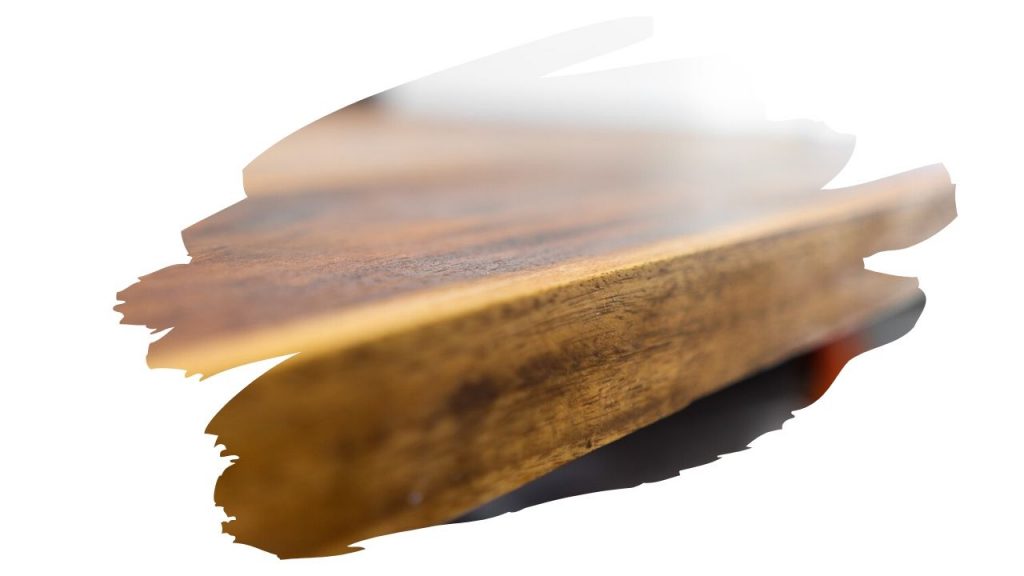It seems like year after year, the price of wood from the lumber yard just keeps on rising.
There are a number of reasons why the price of wood, in general, rises.
Everything from forest fires to trade disputes can force up prices. Which means that cash-conscious carpenters, (and budgeting builders alike), have to pay more out of pocket.
Yet when we look at the price of Walnut Wood specifically, why does it cost so much?
Walnut wood is more expensive than other types of hardwoods because it is rarer (comparatively).
Only 1% of all US hardwood growing stock is Walnut wood due to ever rising demand.
So if Walnut Wood is so expensive, why is it still so popular with woodworkers?

This post may contain affiliate links to products that we receive a commission for (at no additional cost to you). Learn more here.
Why Is Wood So Expensive?
Prices of wood began to surge back in 2018, after a series of forest fires burned their way through prime acres across B.C.
On top of that, trade disputes between Canada and the US meant that lumber stock supplies took a further hit.
But Why Is Walnut Wood So Expensive In Particular?
Walnut wood is so expensive due to supply and demand.
This hardwood may be popular with furniture manufacturers, but compared to other choices, such as Oak, Pine, and Cherry – it is in short supply.
For example, Pine Wood is one of the cheapest woods for furniture due to the fact that it grows so fast.
Some Pine tree species can grow to a commercial size in under a decade.
Black Walnut trees, on the other hand, take up to 55 years to mature.
Is Walnut A Hardwood Or Softwood?
With its high durability factor, and straight grain, Walnut is classed as a hardwood. And as a hardwood, it is incredibly resistant to denting.
According to its Janka test rating, (a test designed to measure just how much damage a wood can take), North American Black Walnut can take up to 1,010 lbs of force.
What Is The Average Cost For Walnut Lumber?
If you’re paying for S4S Black Walnut lumber cut down to size, then be prepared to fork out above average prices.
For Black Walnut, you can expect to pay around $5.25 all the way up to $12.50 per board foot of kiln-dried timber.
What does S4S mean? Well, S4S lumber means ‘Surface on 4 Sides’. This is when you buy wood that comes already prepped, planed and primed to be used straight away (requiring little additional work to ‘straighten’ out the wood).
What Is Walnut Wood Good For?
Walnut wood is good for all sorts of things;
Buildings; Infrastructure, Flooring
Furniture; Cabinets, Tables, Interior Paneling
Music Instruments; Guitars, Harps, Violins
In addition to this, you can also breakdown best uses by species types;
Black Walnut: The North American variety is great for cabinets and paneling.
Brazilian Walnut: Brazilian Walnut has a Janka rating of 3684 lbs of force, making it over 3-times tougher than Black Walnut. This makes it especially resistant to wear and tear, and the perfect walnut option for hardwood flooring.
English Walnut: More commonly these trees are where we harvest most of the walnuts that we eat today. But the lumber of this tree can be used for veneer and small wood projects.
Is Walnut Good For Hardwood Floors?
Walnut wood – thanks to its hard and heavy texture – is frequently used for flooring in deluxe buildings.
It is a good for floors, but some walnut species do better against everyday wear and tear than others.
American Walnut for example, can scratch more easily than Brazilian walnut (its more expensive counterpart).
Does Walnut Darken With Age?
More commonly used manufactured furniture made from woods such as Maple or Oak, tend to darken with time.
Not so when it comes to Walnut. This timber type in fact starts to lighten over time, developing a warm honey color as it ages.
Is Walnut Good For Outdoor Use?
If you are going to use any kind of wood type to make an outdoor structure, then you need it to be rot-resistant.
Black Walnut is the perfect choice for outdoor use, as it naturally resists decay and rot.
But it’s price range means that it is largely left out of the running when considering what wood to get for outdoor projects.
It is also highly water resistant, and can hold up well against the side-effects of moisture-content (such as warping or twisting of the wood).
Final Thoughts
Walnut wood might be pricey, but if you still prize the look of this timber species, then you could try your hand recreating the appearance of walnut, but with a more affordable hardwood.
Lets say you need to cut-costs and save money, then why not simply substitute Walnut wood for a low-cost light wood – such as Maple or Pine – and stain the boards to a darker shade.
A few coats of a Danish Oil Finish will do. You can get Danish Oil in a range of different colors – including Black Walnut.
To learn more about Danish Oil (and why it makes for such a good wood finish) check out my article by clicking here: All About Danish Oil (Advantages and Disadvantages)
This way you can still recreate that great look of dark wood, without having to pay the lumber yard any of those steep prices.
References
https://www.americanhardwood.org/en/american-hardwood/american-walnut
https://globalnews.ca/news/4397747/wildfires-rising-lumber-prices-stocks/
https://ncforestservice.gov/publications/LongleafLeaflets/LL07.pdf
https://www.telegraph.co.uk/gardening/3297715/Woodman-grow-that-tree.html
https://en.wikipedia.org/wiki/Janka_hardness_test
https://ohiotimberworks.com/lumber-fact-sheet/black-walnut-lumber/



